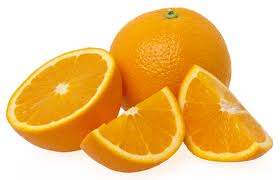Recommended Age: 4 and ½ to 6 years
Level of Parent Involvement: High,
Prerequisites
- The child must be able to count accurately to least ten
- The child must be able to write numbers 1-10
- The child may have had some experience working with the golden beads and know quantities one unit, one ten, one hundred and one thousand
Materials
- 2 oranges
- A knife
- A chopping board
- A sponge to wipe any excess juice
Preparation
- None, except for ensuring that you have oranges available
Steps
- Invite the child, explaining to them you are going to be doing some maths with an orange today
- The child may bring the oranges to the table
- You bring the chopping board and knife
- Take the orange and tell them “this is one WHOLE orange”
- Let the child feel the orange encouraging them to repeat “one WHOLE orange”
- Cut the orange in half letting the child know “if we cut up our WHOLE orange into 2 equal parts we would have 2 halves”
- Now that you have two haves tell the child “this is one half, and this is one half”
- Put the two halves back together showing the child that 2 halves make a whole
- Invite the child to put the halves together
- Now take one of the halves and cut it in half making two quarters
- Take one of the quarters and tell the child this is one quarter
- Show the child how to put the two quarters back together to form one half again
- Allow the child to explore the difference between the whole orange, the half and the quarter
- Do a 3-period lesson with “one whole” “one half” and “one quarter”
- Once finished the 3-period lesson, invite the child to eat the orange or encourage the child to offer the orange to a family member (the child may also use the orange to make orange juice, see Orange Squeezing activity in the Practical Life area)
- The child may wipe up any excess juice once finished with the sponge
Variations
- May use an apple
- The child may cut the orange



